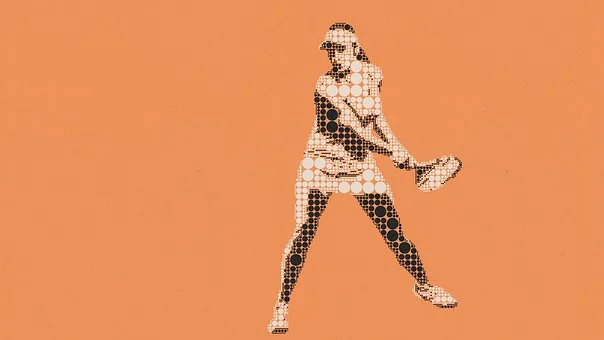
Tennis is a practical and comfortable sport that must follow a stringent set of rules in professional competitions. But that doesn’t mean the uniforms haven’t developed to keep up with the times. For example, Serena Williams and Maria Sharapova have discovered their unique methods to have fun with their clothes (think tennis dresses made of lace and even denim).
Tennis costumes are also known to inspire the crowds. According to Ben Rothenberg’s book The Stylish Life: Tennis, in the 1920s, American tennis player Bill Tilden wowed fans with his forehand and preppy attire. Tilden’s iconic white V-neck sweaters and matching trousers are still a staple of men’s wear today.
Tennis jerseys have altered in appearance and function as a result of technological advancements. Spandex, nylon, and other synthetic textiles that wick away sweat are necessary—and a far cry from what athletes wore a century ago. Keren Ben-Horin, coauthor of She’s Got Legs: A History of Hemlines and Fashion is a fashion historian. ”In the 1880s and 1890s, Victorian ladies played tennis in their street attire, which comprised heavy undergarments like corsets, bustles, and petticoats, as well as enormous skirts that skimmed the ground.”
Let us have a look at how tennis jerseys have evolved.
The 1900S
Tennis became popular in Victorian England, and the attire reflected the vogue: high collared dresses with long sleeves. White apparel, which is readily soiled, became a status symbol for the wealthy, much like the sport itself. Wimbledon mandated all-white clothing for its players in 1890, and ”tennis whites” gradually became the norm. Women wore floor-length skirts, stockings, and long-sleeved tops to play tennis in the early 1900s (all of which prevented a range of mobility). Dorothea Douglass, a British tennis player, won the Wimbledon Women’s Singles title seven times.
The 1920S
Suzanne Lenglen, a French tennis player, made headlines when she played Wimbledon with bare arms and a knee-length hemline. Jean Patou, a French designer, created her attire. On the court, Lenglen also sported flapper-style headbands. René Lacoste, a French tennis player, invented lightweight, breathable cotton shirts (today known as polo shirts) during that decade and began mass-producing them in 1933. Lacoste’s distinctive crocodile emblazoned tops are still manufactured today (”The Crocodile” was Lacoste’s nickname).
The 1950S
As shown here on American star Maureen Connolly, cinched waists, ornate cardigans, and feminine pleated skirts dominated women’s tennis costumes in the 1950s. Following his retirement, Fred Perry, a British tennis star, founded his own clothing company in 1952.
The 1980S
Uniforms became tighter and thinner across the board during the 1980s. In 1985, American tennis player Anne White wore a white unitard to Wimbledon. The next day, officials reportedly suggested that she dress more formally. As part of a tennis match in the 1987 US Open, American Chris Evert misplaced her diamond bracelet on the court, and the action was halted until it was located. The diamond ”tennis bracelet” was born as a result of that incident.
The 1990S
Denim shorts were matched with fluorescent cycling shorts and flashy shirts by American tennis player Andre Agassi. From 1988 to 1990, Agassi declined to play Wimbledon because he didn’t agree with the all-white clothing code.
The 2000S
Maria Sharapova’s attire in the early 2000s featured masculine features and a plethora of Swarovski crystals. Sharapova donned a Nike-designed tuxedo-inspired costume at Wimbledon 2008.
2010
Venus Williams, known to wear edgy uniforms (as has her sister Serena), wore a black transparent lacy outfit that appeared to be inspired by lingerie at the 2010 French Open. Underneath, the tennis player donned a pair of naked shorts.
2016
Brand endorsements are one of the most powerful influences on today’s tennis style. Nike-sponsored women wore pleated shift dresses that kept flying up and revealing their stomachs at this year’s Wimbledon event (shown: Eugenie Bouchard of Canada). According to the New York Times, players who were uncomfortable with the loose clothes were given regular skirts and tops.
Serena Williams wore a Nike white high-collared dress with a pleated skirt to win her 22nd Grand Slam championship at the 2016 Wimbledon Championships. ”I wouldn’t normally remark on another woman’s physique, but could someone give Serena Williams something to cover her nipples…very distracting,” one Twitter user posted. Many of her supporters responded in support of her physique and the dress, praised for its subtle yet elegant design.
